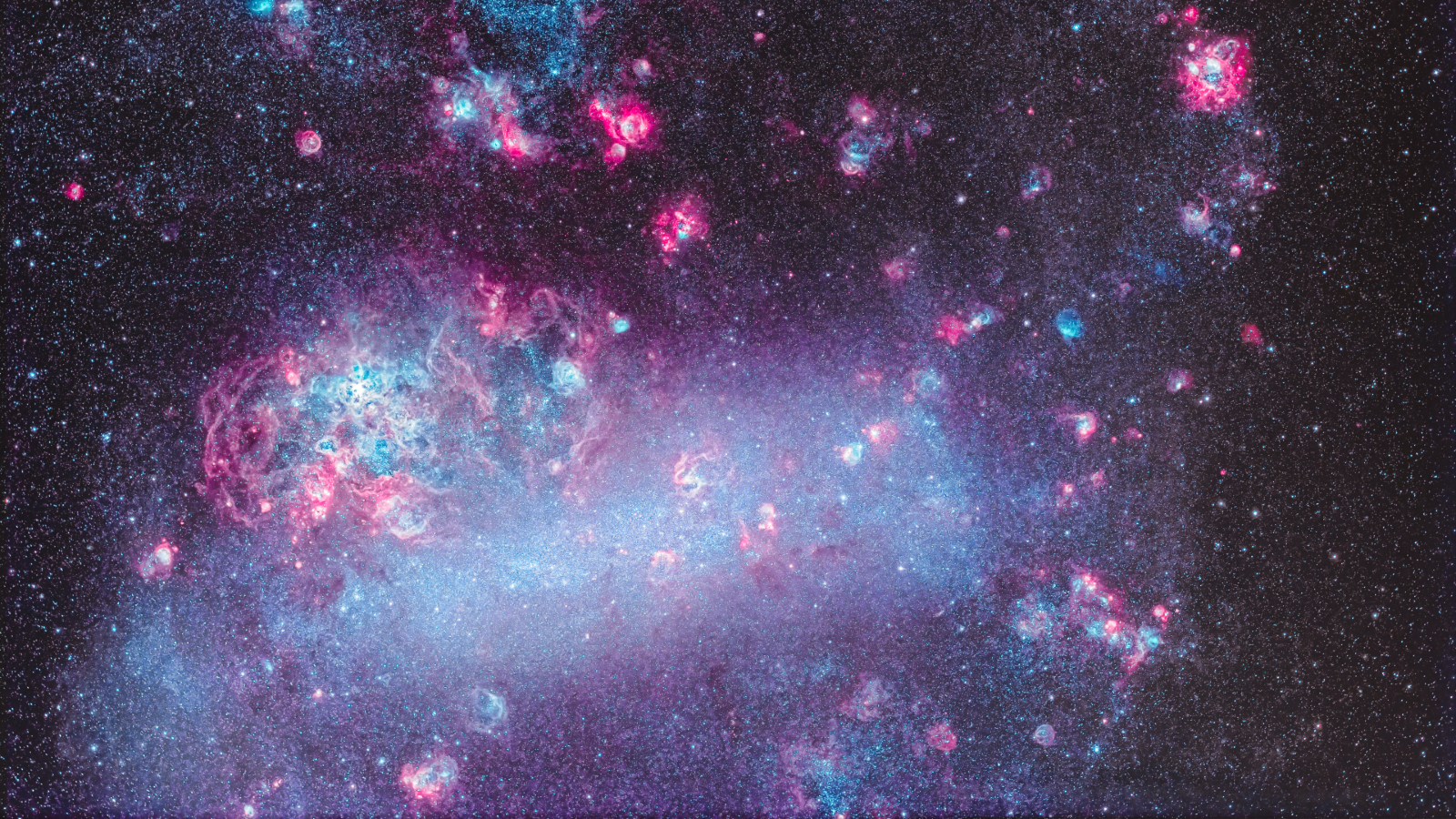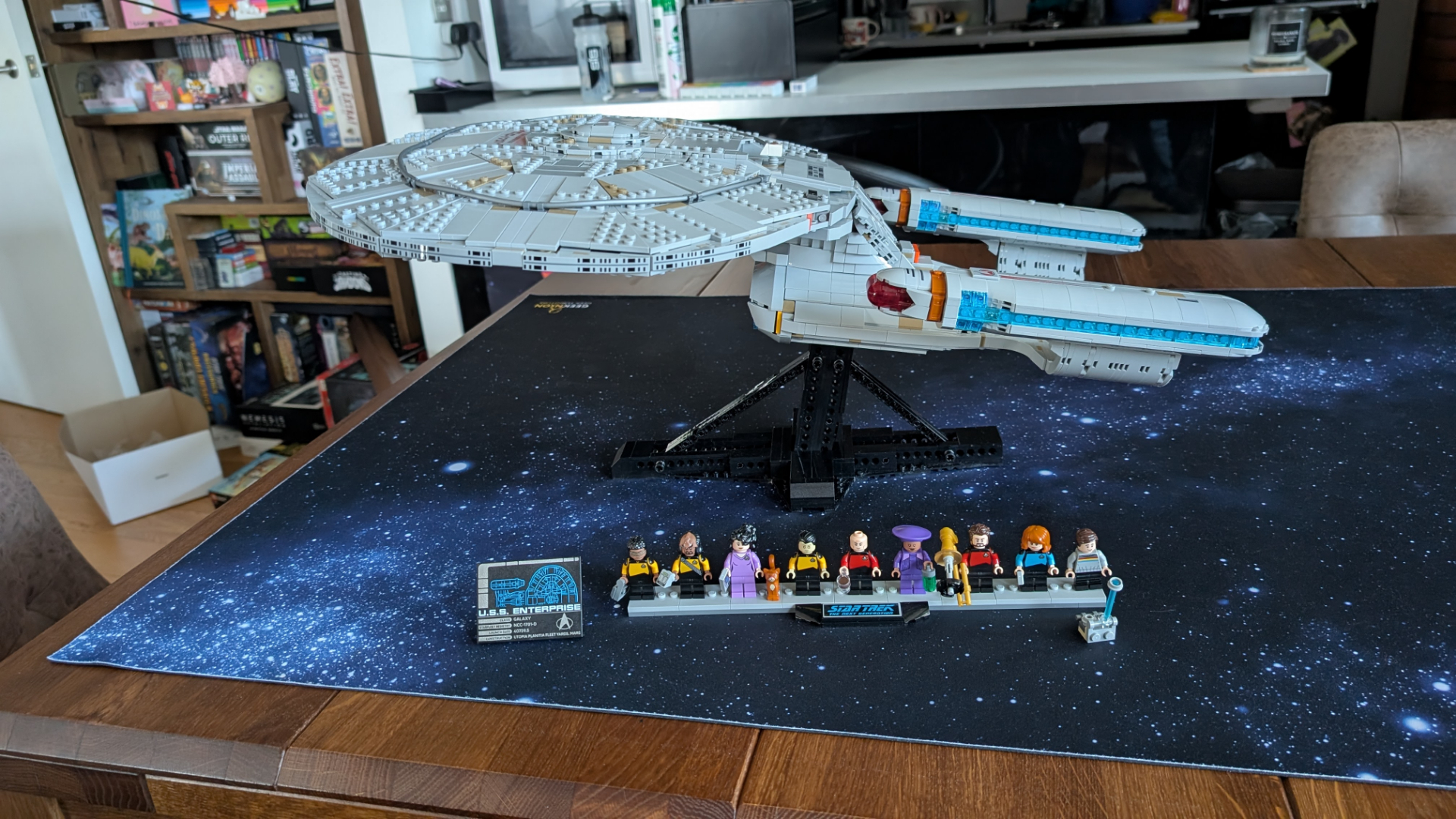Discovery of 250 'mini galaxies' could help scientists pin down the nature of dark matter
Only a fraction of the size of the Milky Way, these galaxies have thus far been too faint for most telescopes to spot.

Among the hundreds of billions of galaxies that stretch across the known universe, even the smallest members can reveal secrets about our cosmic history. But even as we discover new galaxies, astronomers suspect that many small "dwarf" galaxies remain hidden from view. Only a fraction of the size of the Milky Way, these galaxies have thus far been too faint for most telescopes to spot. But a new survey has uncovered dozens of these elusive dwarf systems, often found in swarms orbiting much larger galactic hosts.
Because these dwarf galaxies are unusually sensitive to the underlying physics of the universe, finding a rich trove of them is a powerful way to test competing theories of how the universe is built and how dark matter behaves across different scales in the universe. Their weak internal gravity makes them particularly responsive to external influences, especially the gravitational pull of larger neighboring galaxies. In addition to helping us understand how galaxies form, these interactions can help scientists glean vital information about dark matter — a hypothetical, invisible substance that is thought to make up a significant portion of the universe's mass and energy.
A new discovery of "mini galaxies" has nearly tripled the number of known galactic satellites orbiting isolated dwarf galaxies, and could help scientists start testing these theories. The find was made possible through the Identifying Dwarfs of MC Analog GalaxiEs (ID-MAGE) survey, which scoured deep-sky images to reveal this hidden population of "mini" galaxies. Many are roughly the size of the Magellanic Clouds. These are two irregular dwarf galaxies, the Large Magellanic Cloud (LMC) and the Small Magellanic Cloud (SMC), which are satellite galaxies of our Milky Way. But many of the newly identified dwarf galaxies are far dimmer and were previously difficult to observe.
Other recent surveys have started to find small satellite galaxies orbiting isolated dwarf galaxies. They typically focused on galaxies within about 15 million light-years, close enough to study individual stars and faint satellites using ground-based telescopes. ID-MAGE, however, aimed to expand this search by looking for hard-to-see satellites orbiting around 36 low-mass dwarf galaxies located between 13 and 33 million light-years away.
This new study highlights the valuable opportunity these systems offer for understanding galaxy evolution and serves as a testing ground to explore how dark matter influences their structure. "Dwarf galaxies are unique laboratories for studying the nature of dark matter and galaxy formation," wrote the team in a new study. "Because of their shallow gravitational potentials, they are extremely sensitive to differences in cosmological and galaxy formation models, resulting in a range of testable predictions for galaxy formation."
Comparing these results with studies of larger galaxies like the Milky Way could give fresh insights into how a galaxy's size affects its smaller companions.
To identify the satellite galaxies, the team used a modified version of a "dwarf galaxy detection algorithm" described previously in other studies . The process involves several steps: starting with the original image, masking known objects, spatially binning the masked image to enhance faint signals, and then detecting objects that stand out significantly above the background noise. Candidates detected this way are visually screened to remove obvious false positives before undergoing further inspection through a dedicated online platform.
Breaking space news, the latest updates on rocket launches, skywatching events and more!
"In total, we identify 355 satellite candidates, including 264 newly discovered galaxies." they wrote. "Of the 134 high-likelihood candidates, 36 are associated with LMC-mass hosts and 98 with SMC-mass hosts. The number of satellite candidates per hosts ranges from 0 to 15 high-likelihood candidate."
The survey also found that some of these dwarf galaxies have their own even smaller companions. According to the widely accepted Lambda cold dark matter (ΛCDM) model, which is the mathematical model of the Big Bang, even moderately sized dwarf galaxies are expected to have their own tiny satellite galaxies orbiting them.
Fewer satellite galaxies are found around smaller host galaxies compared to larger ones like the Milky Way, the researchers write in their study In particular, hosts similar in size to the Small Magellanic Cloud have fewer satellites than those like the Large Magellanic Cloud. This matches predictions from current galaxy formation models, which say that bigger galaxies tend to have more stars and more satellite galaxies.
The pattern seen in big galaxies, where the number of satellites grows with the host's size, also holds true for smaller, dwarf galaxies. Detecting such "satellites of satellites" not only tests the model's predictions but also helps astronomers understand how structure builds up on the smallest cosmic scales.
Deep imaging and spectroscopic follow-up observations are underway to confirm and study the 355 satellite candidates. The team writes that observations are planned with major facilities worldwide, such as Green Bank Telescope, Gemini Observatory, Large Binocular Telescope, and others. Results from this follow-up campaign will be shared in future publications.
A study of these new 'mini-galaxies' was published in the Astrophysical Journal.

A chemist turned science writer, Victoria Corless completed her Ph.D. in organic synthesis at the University of Toronto and, ever the cliché, realized lab work was not something she wanted to do for the rest of her days. After dabbling in science writing and a brief stint as a medical writer, Victoria joined Wiley’s Advanced Science News where she works as an editor and writer. On the side, she freelances for various outlets, including Research2Reality and Chemistry World.
You must confirm your public display name before commenting
Please logout and then login again, you will then be prompted to enter your display name.
